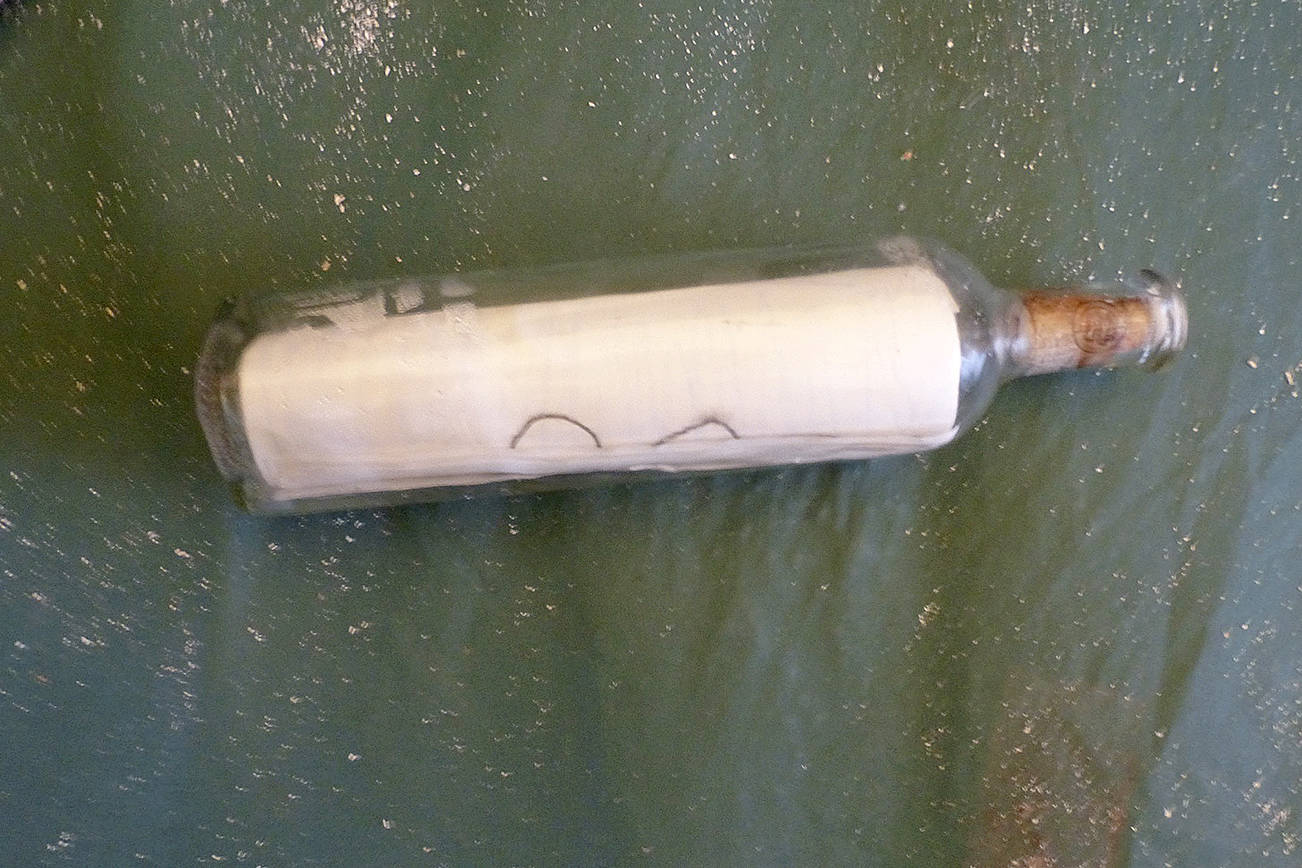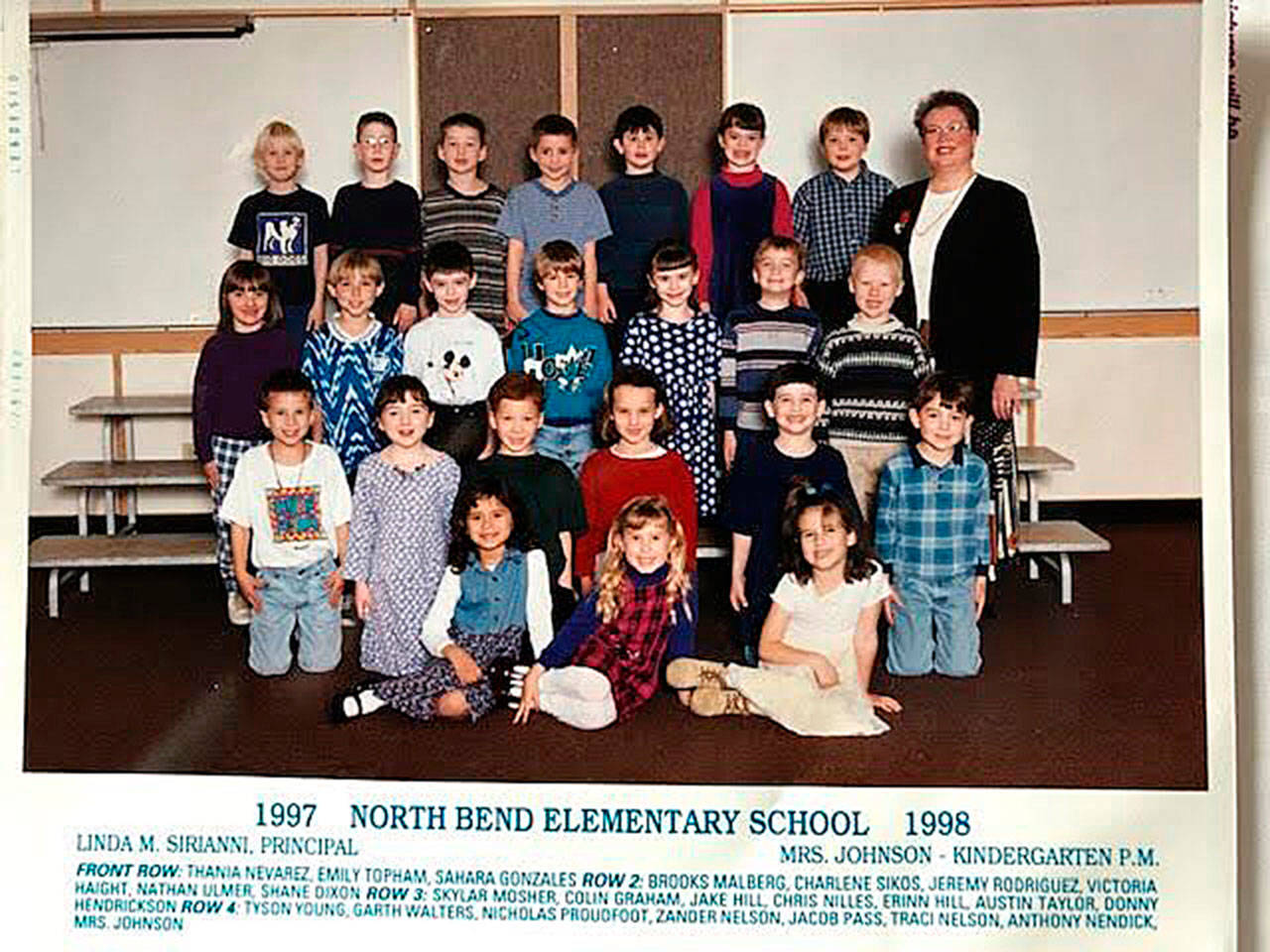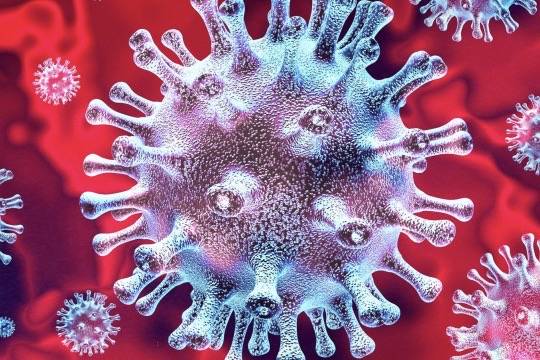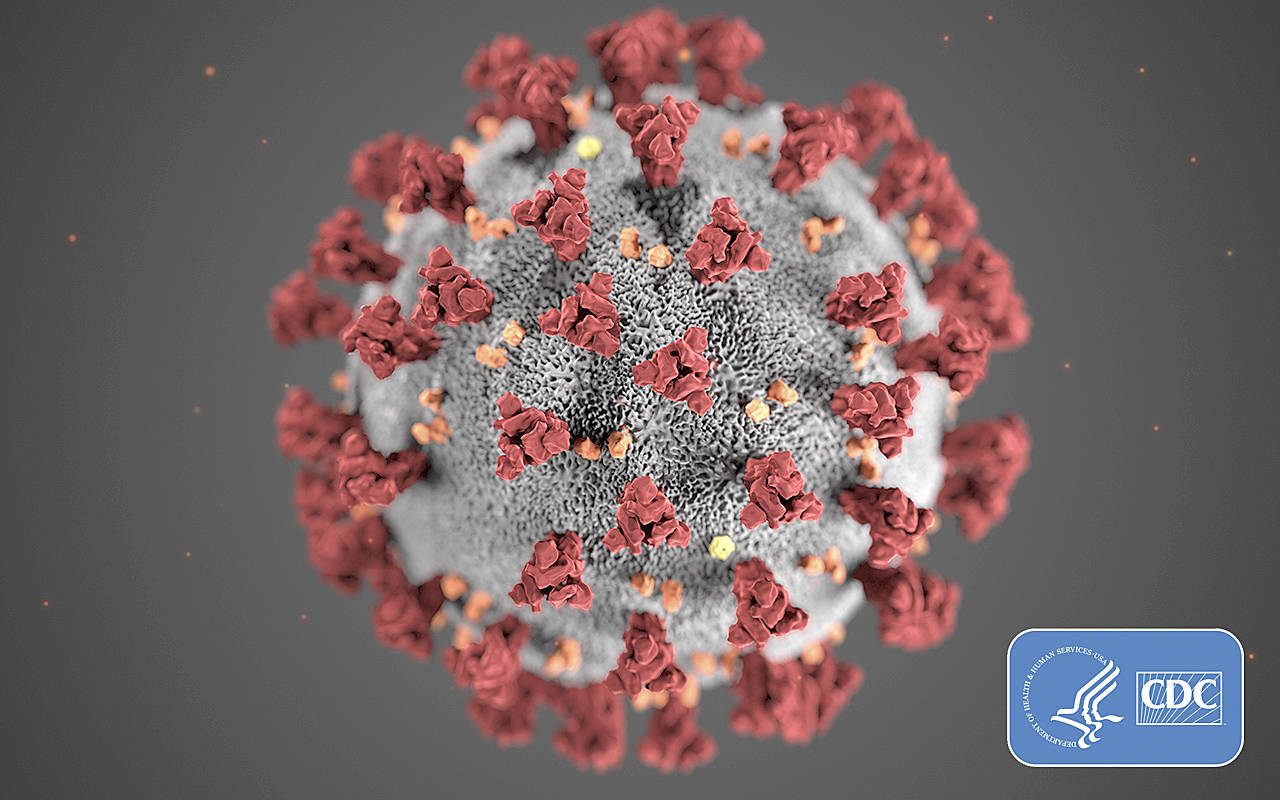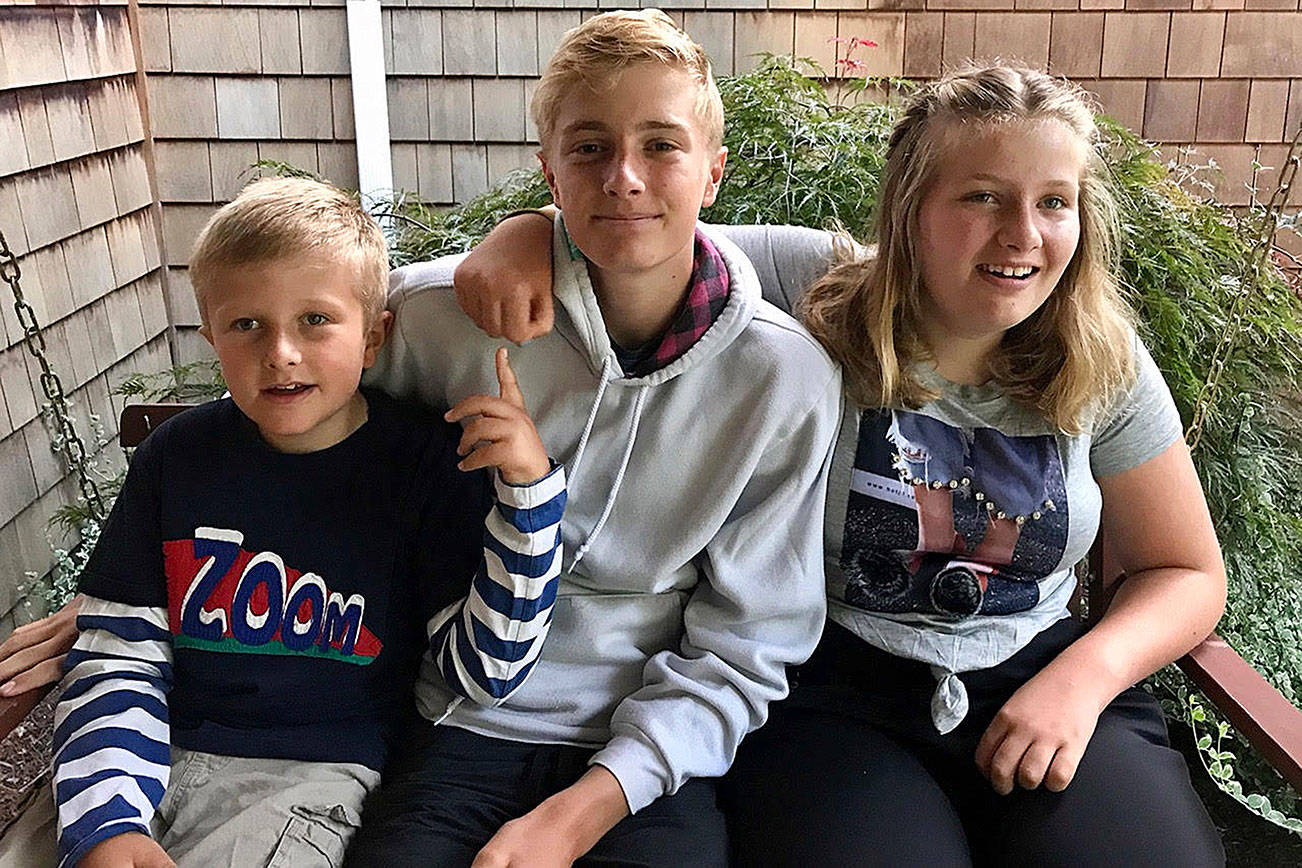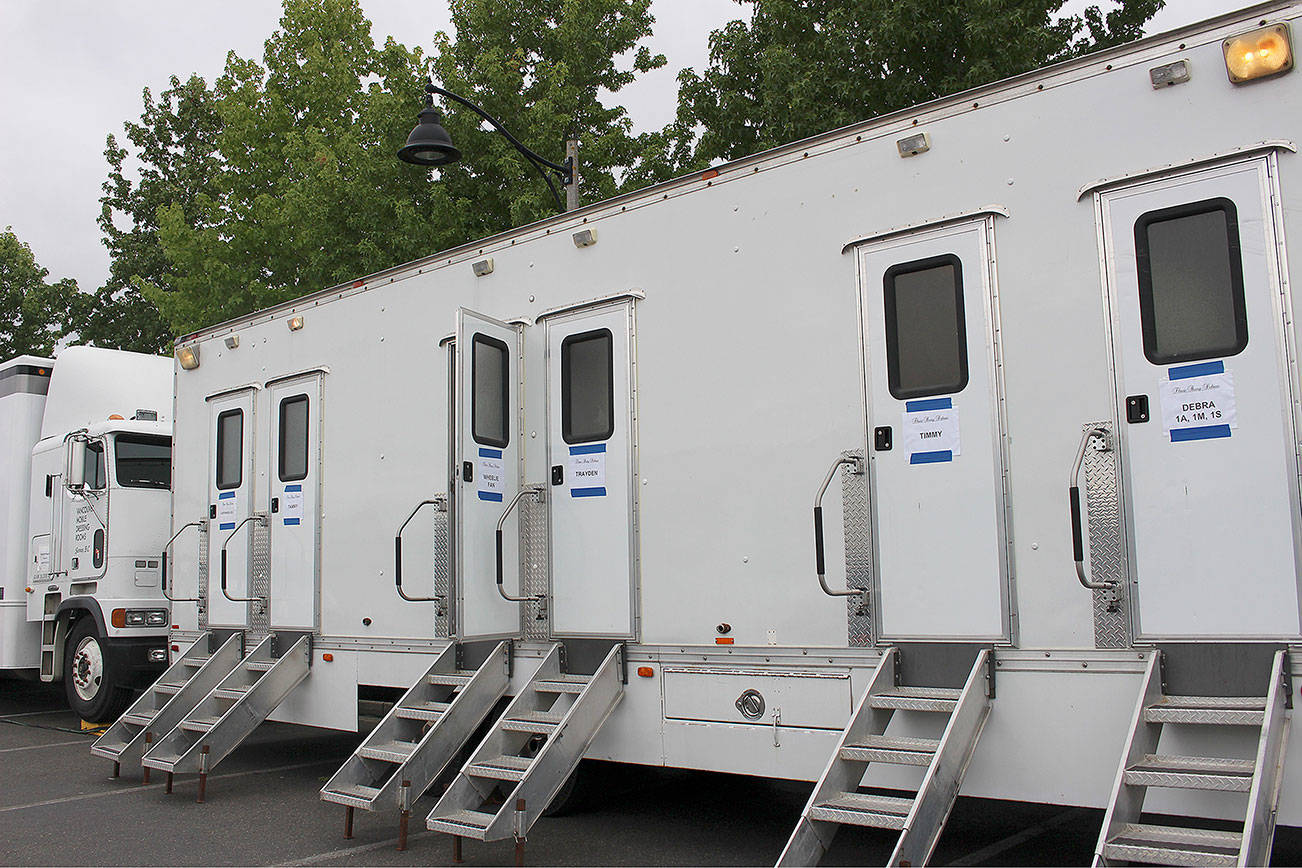Many people have written a message in a bottle and sent it out to sea, wondering if their message would ever be found, and who would find it. Most will never have answers to those questions.
A former North Bend Elementary kindergarten class, however, now has an answer — 21 years later.
In June of 1998, Mary-Lee Johnson had her kindergarten students write questions to a potential bottle finder. Along with the students’ notes and hand drawn pictures, Johnson included a brief letter and a class photo.
Johnson’s husband dropped the bottle in the ocean while sailing in the 1998 Pacific Cup race from San Francisco to Hawaii.
In June of this year, the bottle was found by Paige Mino, a seasonal research assistant for the Hawaiian Monk Seal Research Program on Oahu, off the coast of Bird Island.
“At the high tide line is a bottle,” Mino wrote in her blog for NOAA (National Oceanic and Atmospheric Administration). “Nothing is special about that — the atoll is littered with plastics and glass bottles. But this one is different, I can see that there’s something inside. Walking over to the bottle I pick it up and examine the contents. Instantly I realize what I’ve found: A message in a bottle.”
Opening the bottle, Mino and her teammates read each note from all 24 students.
“Nick wants to know if we have any gold, Erinn wonders if we like cats, and Tyson asks if there’s a volcano near us,” Mino wrote. “We [sat] and match[ed] each student to their question, wondering how old these kids are today and if they even remember writing these questions. The final three pages are student drawings, featuring the Cascade Mountains and now-illegible scribbles that have been bleached by the sun.”
Included in the bottle was the school’s address and a phone number.
Johnson, now retired, still volunteers in the school district. She received a call from the school saying someone found her class’s message in a bottle.
“I got goosebumps,” Johnson said. “I was so excited. I was always curious if it would ever be found and where.”
Her 1998 class was the only one to make a message in a bottle. At the time, she said, the class just finished a geography lesson. Her students made guesses where the bottle could be found.
“One student said Antarctica. Another said it’d go back to California,” she said.
The bottle traveled about 3,000 miles over the 21-year span. The bottle traveled from San Francisco to Bird Island by way of the North Pacific Gyre, according to Mino.
Created by trade winds and the Earth’s rotation, the gyre consists of multiple currents, she said.
“The bottle must have been picked up by the California Current and eventually converged with other currents to ultimately end up at Pearl and Hermes,” she wrote. “The atoll, which is a part of Papahanaumokuakea Marine National Monument, is uninhabited for most of the year.”
Although few people ever get to Pearl and Hermes, it is littered with man-made trash, Mino write. For Mino, finding the bottle was a delightful surprise.
“Living in this atoll and seeing first-hand the impact that marine debris has on the environment is a saddening experience, which is why it’s nice to find a little bottle of treasure in a sea of trash,” she wrote. “When you’re in the field, there isn’t a lot of contact with the outside world. For months at a time the only people you see are your teammates, and the only form of contact with friends and family is through satellite email. Finding this bottle opened up the possibility of making a new connection and interacting more with the outside world.”
Following the bottle’s discovery, Mino and Johnson connected via email. Johnson planned a trip to Hawaii and hoped to meet Mino in person, however it was not feasible.
Since the bottle’s discovery, Johnson said she hopes to reconnect with the 1998 kindergarten class and hold a reunion.
“It’s so exciting to know the bottle was found, and I’d like to share that with the kids,” she said. “It’s good that word travels faster than by bottle.”
